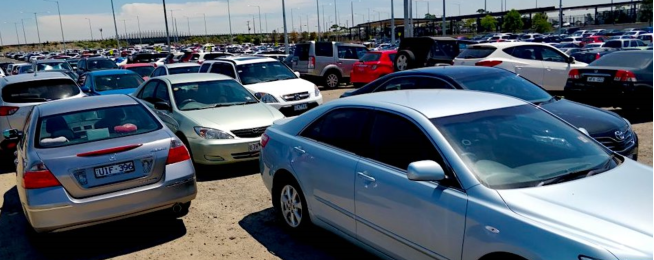For a start, no one knows what the real level of demand is. Because use of the spaces are free, they will naturally be used by many people who don’t actually need to use it.
So the politicians could be chasing their tail: there could be near infinite demand for free station parking and no number of additional spaces could satisfy that demand.
And then there is the cost. According to well-informed public transport commentator Daniel Bowen, some station parking pledged by the coalition will cost $66,000 per space.
"That’s about 7,600 daily fares, or more than 30 years of Monday to Friday commuting — almost 40 years if using a Yearly fare,” Bowen says.
Bowen’s article, well worth reading, is a litany of reasons why building more station car parking can be a really bad idea. And he’s a guy that wants more people using railways.
Read article Melbourne's station parking problem here.
And then there is the humble bicycle—the transport device that in most of the civilised world is the preferred way of getting to your local station.
In Victoria, we are seeing Parkiteer secure parking rolling out at many stations, but the local riding environment is often far from attractive to prospective riders.
A positive indicator is that the Federal Government might at last be coming to the realisation that more car parking alone will not solve the station access problems.
In its new publication, Outer Urban Public Transport, Infrastructure Australia sees bikes at stations as a key element in reforming transport in the suburbs.
Public transport networks should be accessible by active transport, car share and ride share, as well as cars, the report says.
"Whether on foot, on two wheels or four, public transport passengers must bridge the first and last mile to their destinations.
"Walking and cycling are environmentally friendly and healthy ways to access the public transport network, and also amongst the cheapest to accommodate and should therefore be embraced.
"Cycling can enable people to cover longer distances relatively quickly, so it can be a useful mode of transport in lower-density areas.
"However, people are often discouraged from cycling because they feel unsafe riding on roads, and there are limited storage options for their bikes. These issues can be at least partially overcome through better planning and well-designed public transport facilities.
"Most local, state and territory governments have identified strategic cycling networks. These networks are normally a combination of segregated cycleways, cycle lanes and quieter roads that cyclists are encouraged to use.”
The report says that public transport access points, particularly larger stations and interchanges, should act as focal points for bicycle networks.
"These networks should prioritise the safety of cyclists, including full separation from motor vehicles where necessary. To ensure continuity of cycling networks, local governments may also consider working together to develop larger regional networks with assistance from other levels of government."
The report also says governments should support, and consider providing, on-demand bike services (such as e-bikes and bike share) at stations.
“This will allow passengers who do not own a bike, or are unable to bring their bike on public transport, to extend how far they can travel once they end their public transport trip.
"Ultimately, empowering passengers through providing information and options when they need them increases the catchment of the public transport network and improves its attractiveness."
Read the full Outer Urban Public Transport publication here.
Become our friend
Find out more about Bicycle Network and support us in making it easier for people to ride bikes.


